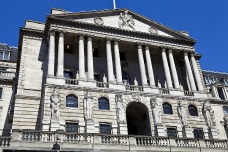Bank of England adjusts interest rate in line with economic recovery
The Bank of England has widened the range of factors that determine its rate policy, allowing it to align with UK unemployment and the progress of economic recovery.
In August Carney announced his forward guidance plan along with the Bank’s Monetary Policy Committee (MPC). This set out detailed direction on how monetary policy will be managed, focusing specifically on future interest rates.
Central banks like the Bank of England regulate the short term interest rates of lending to/borrowing from high street banks. Currently this sits at the lowest possible rate to increase lending, but to support the domestic economy further the Bank is looking to use forward guidance to convert short term interest rates into long term rates.
As a result of the UK’s unemployment rate, which is directly linked to the interest rate, decreasing almost to the 7% bank threshold, Carney has had to make adjustments to the plan. By introducing more factors influencing the rate, the rate should only fluctuate slightly. The new economic variables include wages, productivity, and output gap, which is the difference between the potential output and the confirmed output.
Carney is confident in the forward guidance plan and stated that “expected interest rates have remained low even as the economy has recovered strongly, uncertainty about interest rates has fallen, and most importantly, UK businesses have understood the message”.
According to Chris Williamson, chief economist at Markit, the first bank interest rate increase is not due until the second quarter of next year. “Rates are then projected to rise to 2% by early 2017. Beyond 2017, the message from the Bank is that ‘even when the economy has returned to normal… the appropriate level of Bank rate is likely to be materially below the 5% level set on average by the [Bank] prior to the crisis'”.
The improved economic recovery and reduced unemployment in the UK has led to a better growth forecast, increasing from 2.8% to 3.4% in 2014.
